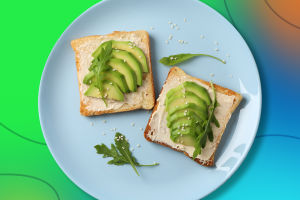Cinnamon rolls are a very classic American sweet bread. They have a high content of butter and eggs, a rich taste, and a strong aroma of cinnamon.
When it comes to cinnamon rolls, we should talk about its main ingredient-cinnamon powder. Cinnamon powder is a powder made from the dried bark and branch bark of cinnamon or cinnamon. It is fragrant and is often used in bread, cakes and other baking products.
It has the effect of reducing blood sugar and blood lipid.
Cinnamon is widely used in North America, Europe, South America, the Asia-Pacific region, the Middle East and Africa. In 2020, the global planting area of cinnamon is about 318000 hectares, and the global output of cinnamon is about 249000 tons. 98% of the world's cinnamon is produced in Indonesia, China, Vietnam and Sri Lanka.
About 250 species of cinnamon have been identified worldwide. Today, there are two main kinds of cinnamon used on the dinner table, one is cinnamon, Sri Lankan cinnamon (also known as Ceylon cinnamon), Ceylon cinnamon is sometimes marked as real cinnamon
It is sweet and mild, the taste is a complex, slightly orange aroma, suitable for dessert, bread, coffee and milk tea.
The other kind is cassia cinnamon, also known as Chinese cinnamon, this kind of cinnamon is more common, Chinese cinnamon is produced in Guangxi, Guangdong, Fujian, Yunnan and other low-latitude mid-and low-altitude mountains, bark is fleshy, showing dark reddish brown, sweet and rich smell, slightly bitter taste
Chinese cinnamon is the most commonly used cinnamon species used by family cooks to add a sweet, spicy smell to the food in the stew.
The production process of Ceylon cinnamon is time-consuming and laborious. It takes four or five years for seedlings to start harvesting. Collecting cinnamon needs cutting off the branches of cinnamon trees at a certain angle, so that cinnamon trees can grow again later.
Twice a year, after the large and small monsoon season, when the air humidity reaches a certain level, the cinnamon peeler goes to work. In order to get a very thin cinnamon stick, the peeler takes several hours to peel off the endothelium of the cinnamon tree. And finer work is yet to come.
First, use a sharp knife to loosen and remove the fragile bark. The cinnamon is about half a millimeter thick and as thin as paper. They are dried and rolled up in a few minutes in the sun, and the dried pieces are stuffed into a straight bark to form a 42-inch sleeve.
Finally, dense cigar-shaped quill pens are formed, which are dried, graded and cut to a certain length.
It takes at least five to seven years for an apprentice to become a qualified peeler. It takes cinnamon peelers decades to perfect their peeling skills. Even the most skilled peelers can only produce a few pounds of Ceylon cinnamon like a quill pen every day.
Then, quill pens are packed into bundles and graded, and Ceylon cinnamon has more than 10 grades. The more valuable cinnamon is. The thinner and thinner the bark is, the higher the cost of making it. The smaller pieces left in the quill will be made into cinnamon powder.
Because cinnamon takes a long time to make, cinnamon rolls are generally not cheap.


